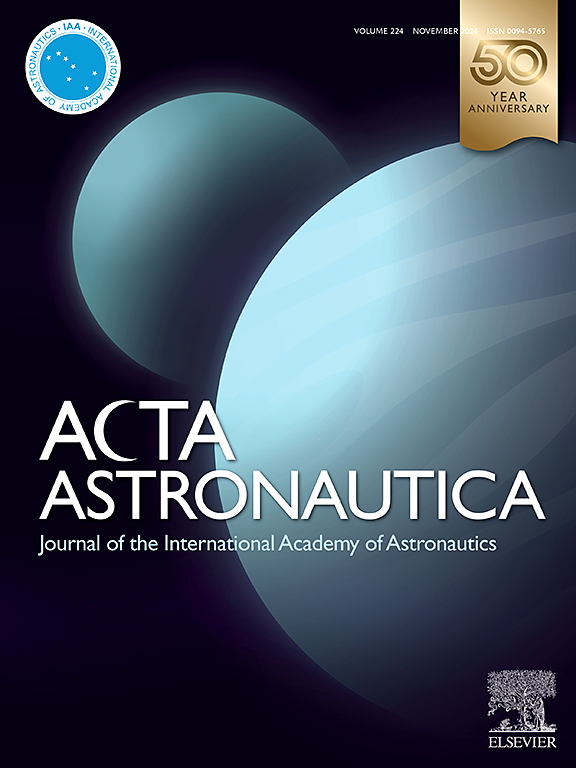LEIA:美国国家航空航天局自 1972 年以来首次在月球表面执行生物任务
IF 3.1
2区 物理与天体物理
Q1 ENGINEERING, AEROSPACE
引用次数: 0
摘要
本文章由计算机程序翻译,如有差异,请以英文原文为准。
LEIA: NASA's first biological mission on the lunar surface since 1972
The Lunar Explorer Instrument for space biology Applications (LEIA) mission was awarded in 2022 by NASA. LEIA will be delivered to the lunar surface no earlier than 2027 on a commercial lunar lander. It aims to investigate the effects of the lunar surface environment on biological organisms. Particularly, LEIA will study the effects on different DNA damage and stress response mechanisms, as well as on synthetic bioproduction of antioxidants in the budding yeast Saccharomyces cerevisiae. To achieve these aims, LEIA consists of a science suite of three instruments: a microfluidic-based system (BioSensor) with microbial growth support capabilities, a charged particle detector (LET spectrometer), and a mini fast neutron detector (mini-FND). The BioSensor instrument has high heritage from NASA's BioSentinel CubeSat mission, which launched to a heliocentric orbit onboard the Artemis I rocket in late 2022 (currently at 60 million kms from the Earth). An identical BioSensor payload successfully performed biological experiments on the International Space Station (ISS) in 2021–2022. The BioSensor instrument contains a complex fluidic system that delivers nutrients to desiccated yeast cells in fluidic cards. Growth and metabolic activity are monitored via optical absorbance measurements, thus allowing for the detection of changes caused by cellular or DNA damage on the lunar surface. In addition, it allows to measure and detect the effects on the bioproduction of dietary antioxidants. The LET spectrometer and mini-FND instruments will quantify and characterize the lunar surface radiation environment. Thus, LEIA will support the development of potential countermeasures for future human missions to the Moon. In addition to using high-heritage instrumentation, many lessons learned from BioSentinel have been implemented in the design and development of LEIA.
求助全文
通过发布文献求助,成功后即可免费获取论文全文。
去求助
来源期刊

Acta Astronautica
工程技术-工程:宇航
CiteScore
7.20
自引率
22.90%
发文量
599
审稿时长
53 days
期刊介绍:
Acta Astronautica is sponsored by the International Academy of Astronautics. Content is based on original contributions in all fields of basic, engineering, life and social space sciences and of space technology related to:
The peaceful scientific exploration of space,
Its exploitation for human welfare and progress,
Conception, design, development and operation of space-borne and Earth-based systems,
In addition to regular issues, the journal publishes selected proceedings of the annual International Astronautical Congress (IAC), transactions of the IAA and special issues on topics of current interest, such as microgravity, space station technology, geostationary orbits, and space economics. Other subject areas include satellite technology, space transportation and communications, space energy, power and propulsion, astrodynamics, extraterrestrial intelligence and Earth observations.
 求助内容:
求助内容: 应助结果提醒方式:
应助结果提醒方式:


